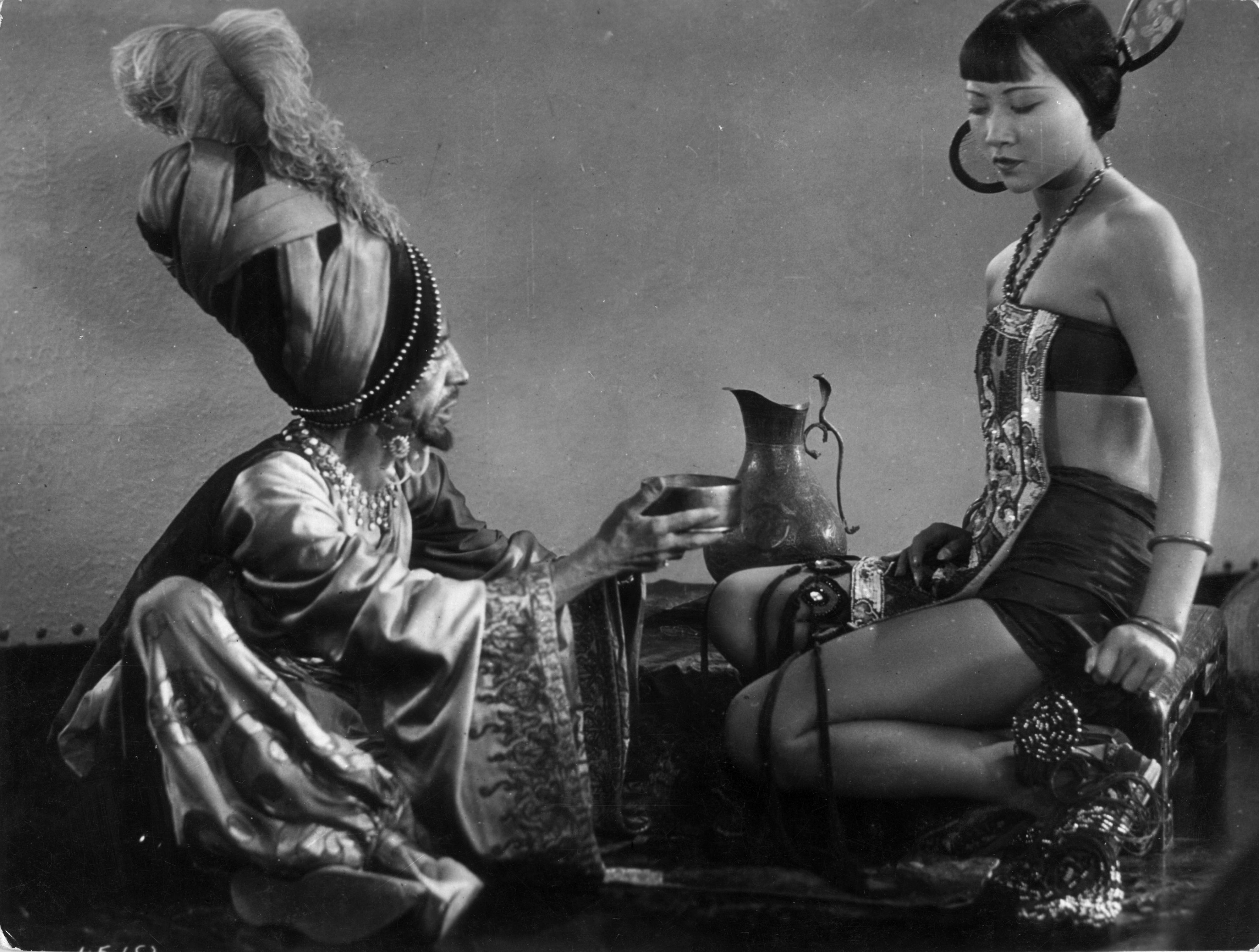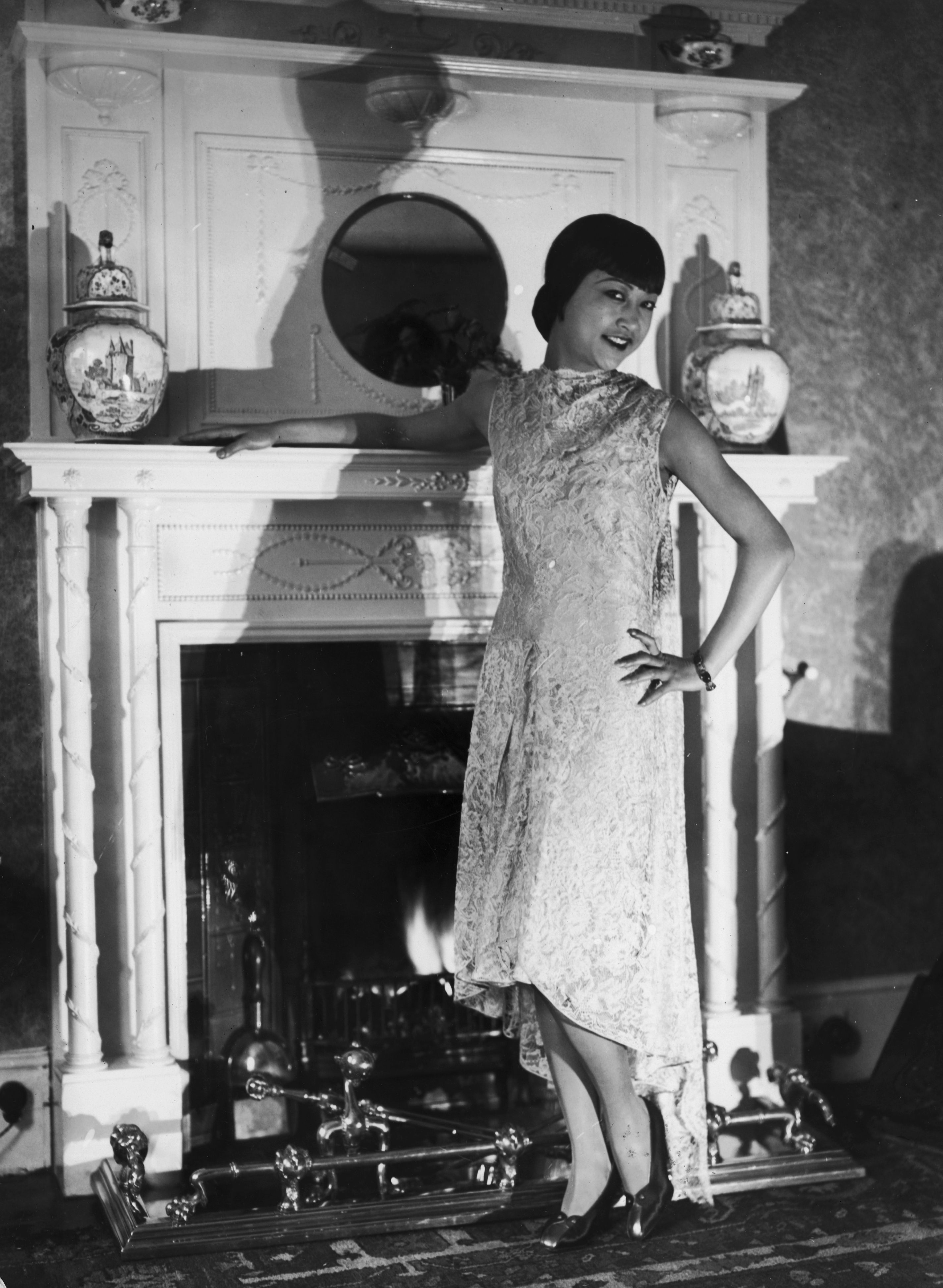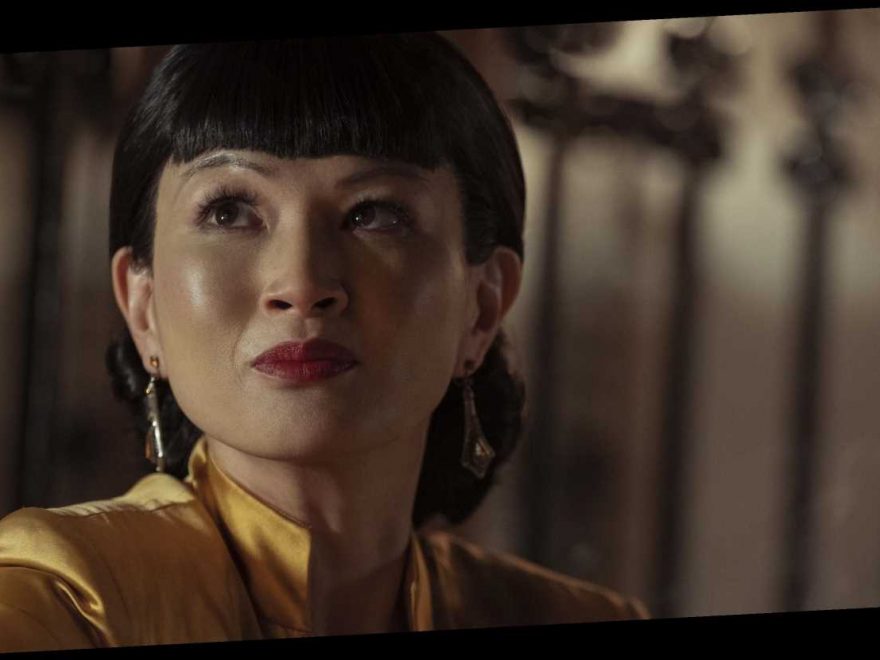When you think of early Hollywood icons, Vivien Leigh, Ava Gardner, or Katharine Hepburn may come to mind, but oft overlooked is Chinese-American, silver-screen pioneer Anna May Wong. Though it’s easy to write off that vintage era of showbiz as one dominated by a homogenous roster of white movie stars (and it kind of was), some history was being made deep in the background. Wong, widely known as the first Asian-American movie star, was part of it.
Netflix’s new series, Hollywood, brought by Ryan Murphy and Janet Mock, reimagines Tinseltown’s history so that influential but marginalized stars like Wong, Hattie McDaniel (the first African American actor to win an Oscar), and closeted queer actors like Rock Hudson are celebrated as they deserved to be while living their lives authentically. After being pigeonholed by the industry into stereotypical roles as a “dragon lady” or fetishized seductress, Wong, played by Krusiec, seems to get the success and career she deserved in Hollywood. But here, we revisit how her journey actually played out in real life.
She was born in Chinatown in L.A.
The actress was born Wong Liu Tsong in 1905 in Los Angeles’s Chinatown district. Her parents owned a laundromat. She attended a mostly white school, but as a third-generation Chinese American, she still experienced racism and ultimately transferred to a Chinese school, Time reports. The movies were her escape. She would sometimes ditch class to observe film sets in town.
“I would worm my way through the crowd and get as close to the cameras as I dared,” she said, according to the book Perpetually Cool: The Many Lives of Anna May Wong.

She started landing roles as a teen.
All of that hanging around film sets earned Wong the attention of casting directors. She made her film debut at age 14 in The Red Lantern, and secured her first lead role as Lotus Flower in Madame Butterfly-inspired feature, The Toll of the Sea, when she was just 17 years old, per Time. Two years later, she appeared in The Thief of Bagdad, which is considered her breakout role.
She was cast as stereotypical characters.
Wong appeared in over 50 films in her lifetime, according to The New York Times, which included 1932’s famous Shanghai Express, where she starred opposite Marlene Dietrich. But she was often cast in sensual or subservient roles. In The Thief of Bagdad, she had a small part as a Mongol slave, but it received a lot of attention because she was barely clothed, sporting only a bandeau top and mini skirt seemingly fashioned out of silk scarves.

Wong’s typecasting into roles of seductive temptresses highlighted a tired racial trope of the exoticized Asian woman. This was not only frustrating for Wong in America, but also cause for ridicule in her family’s home country. “Her role as a sexually available Chinese woman would eventually earn her resentful criticism in China,” biographer Russell Gao Hodges wrote of the actress, per Time. Even when she visited China for the first time in 1936, she faced backlash.
To top it off, lead roles or Asian characters with depth were given to white actresses who wore yellowface, especially in The Good Earth (but more on that later). In 1928’s The Crimson City, Wong was given a minor role and had to teach Myrna Loy, a white actress playing the Asian lead, how to use chopsticks, Hodges writes in her biography.
Frustrated over cliché opportunities, she left for Europe.
Understandably fed up with the parts she had landed (and couldn’t land), Wong left the U.S. for Europe. “I was so tired of the parts I had to play. Why is it that the screen Chinese is nearly always the villain of the piece, and so cruel a villain—murderous, treacherous, a snake in the grass. We are not like that,” she later said in an interview, according to The Los Angeles Times.
“How should we be, with a civilization that’s so many times older than that of the West. We have our own virtues. We have our rigid code of behavior, of honor. Why do they never show these on the screen? Why should we always scheme, rob, kill? I got so weary of it all—of the scenarist’s concept of Chinese characters. You remember ‘Fu Manchu’? ‘Daughter of the Dragon’? So wicked.”
Overseas, Wong starred in films in Berlin, Paris, and London, many in various languages, according to PBS Thirteen. One of her most famous projects was 1929’s Picadilly.

She was denied the lead in The Good Earth.
Hollywood touches upon how Wong was robbed of a lead role in 1937’s The Good Earth, the adaptation of Pearl S. Buck’s literary drama about a family of Chinese farmers. This happened in real life.
Wong revealed in an interview that MGM wanted her to do a screen test for the role of a concubine even though she had her eyes on the lead, of O-lan. “I’ll be glad to take the test, but I won’t play the part,” she’d said, per the L.A. Times. “If you let me play O-lan, I’ll be very glad. But you’re asking me—with Chinese blood—to do the only unsympathetic role in the picture, featuring an all-American cast portraying Chinese characters.”
Afterwards, the studio still wanted Wong for the concubine role, and cast German actress Luise Rainer as O-lan, changing her appearance to make her “look Chinese” for the film. Wong refused the part she was offered. Rainer won the Best Actress Oscar for her performance.
She was the first Asian American actor to lead a TV show.
Wong retired in 1947, but returned to the screen years later. In 1951, she made history yet again as the first Asian American to lead a television series, The Gallery of Madame Liu-Tsong, where she starred as a gallery owner and detective.
She apparently was also hoping to appear in the film Flower Drum Song in 1961, but she died that year at the age of 55.
Source: Read Full Article
